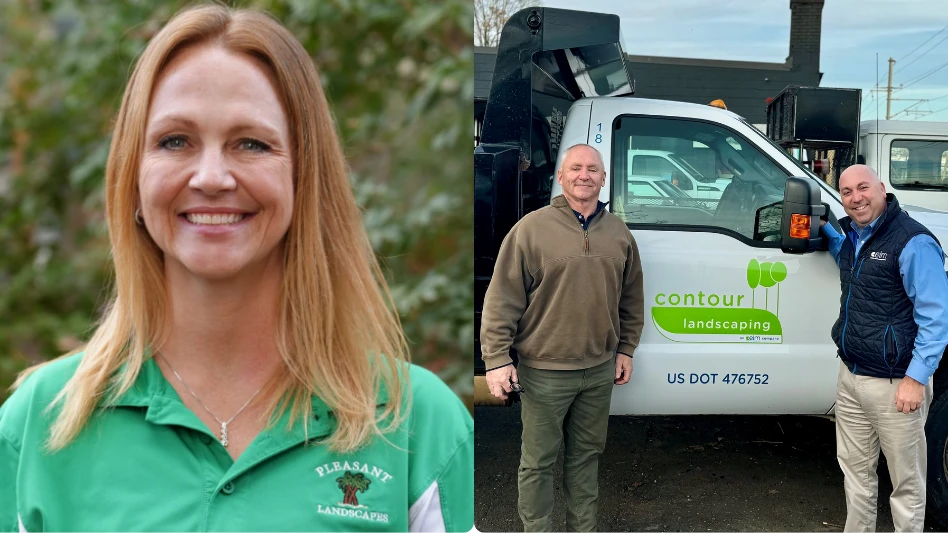Sales Call offers landscapers Marty Grunder’s practical and tactical advice on how to improve their sales and marketing, and grow their company’s bottom line.

At our annual GROW! Conference in Tampa this year, we were fortunate enough to have Clay Mathile, former owner of Iams, join us for our keynote session. A resident of my hometown of Dayton, Ohio, Clay purchased the now well-known pet food company for $1.2 million in 1982 and 17 years later sold it to Procter & Gamble for $2.3 billion. He was the only shareholder.

One of the lessons Clay shared with us is the unique value having a board can provide business owners, no matter the size of the company.
Now, for many of us, the notion of a board conjures up images of Fortune 500 companies, men in suits and heated discussions about shareholder value. It can be hard to imagine what a board could do for a small, privately held landscaping company, or to think you have the time or the resources to build one.
But as Clay likes to say, “If you ran a popcorn stand on the corner of Third and Main in Dayton, Ohio, I would still suggest that you have an outside board.” In the months since GROW!, we’ve received a lot of questions about this topic, so I want to share with you my own thoughts and what’s worked for me.
Honest, objective feedback can be invaluable.
Being the owner of a company is like driving a bus with your whole team in tow. Your team (rightfully) expects you to know exactly where you want to go and the best way to get there. And if they suspect you’re making a wrong turn along the way, they may not feel it’s their place to tell you.
That’s where a board of outside advisors can really help you. Not beholden to you for their careers, they have the freedom – and the responsibility – to ask you the kinds of tough big-picture questions all owners need to answer if they want to succeed.
Do you really know where you want the company to go? What is your vision, and are you truly and consistently taking the right steps to achieve it? Knowing that I have a meeting coming up with the board of my landscaping company forces me to take a step back and honestly assess my own progress toward my company goals to a degree I probably wouldn’t on my own. Peer groups drive this accountability, too. In my experience, the smartest people in business leverage both.
“Some of the board members who have helped me the most are risk-takers from outside the green industry.”
Outside perspective can dramatically broaden your view.
To succeed in business, you have to get exceedingly focused on your own industry and all its intricacies, big and small. But doing this can also lead to a kind of tunnel vision that has the potential to close you off from innovation. By finding accomplished business people from other sectors to serve on your board, you can get fresh insights into solving the problems that are in front of you, whether you realize they are or not.
Some of the board members who have helped me the most are risk-takers from outside the green industry. They’re innovators, not followers, who have challenged me to rethink my own assumptions about what a landscaping company can be and how we approach recruiting, billing, marketing and sales. They are also running, or have run, companies as large or larger than mine. Through their insights, I’ve gotten regular access to talent I couldn’t afford to hire on my own.
One other advantage: When particularly difficult personnel decisions arise at your company, it can be very hard as an owner to take the emotion out of it and do what’s right for the company. Some years ago, when I faced a tough situation involving a family member on my leadership team, it was my board who provided invaluable perspective and helped me to see the larger impact of his actions.
Choose your board wisely and deliberately.
As CEO, who serves on your board is entirely up to you. Start by identifying established business leaders in your own community whom you admire and respect. Your local Optimists Club or chamber of commerce can be good sources for potential candidates.
You only need to find one person to start. Ask them to lunch and get a sense of their values and level of interest. Meet with them regularly over the next six months to a year and, if it works out, ask them to join your board. Then rely on that person to help you in selecting your next members, aiming for three to five members total.
Building a board takes work, but in my experience it’s an investment that can pay tremendous dividends for your company and your professional growth.
See you next month!

Explore the August 2018 Issue
Check out more from this issue and find your next story to read.
Latest from Lawn & Landscape
- LawnPro Partners acquires Ohio's Meehan’s Lawn Service
- Landscape Workshop acquires 2 companies in Florida
- How to use ChatGPT to enhance daily operations
- NCNLA names Oskey as executive vice president
- Wise and willing
- Case provides Metallica's James Hetfield his specially designed CTL
- Lend a hand
- What you missed this week





